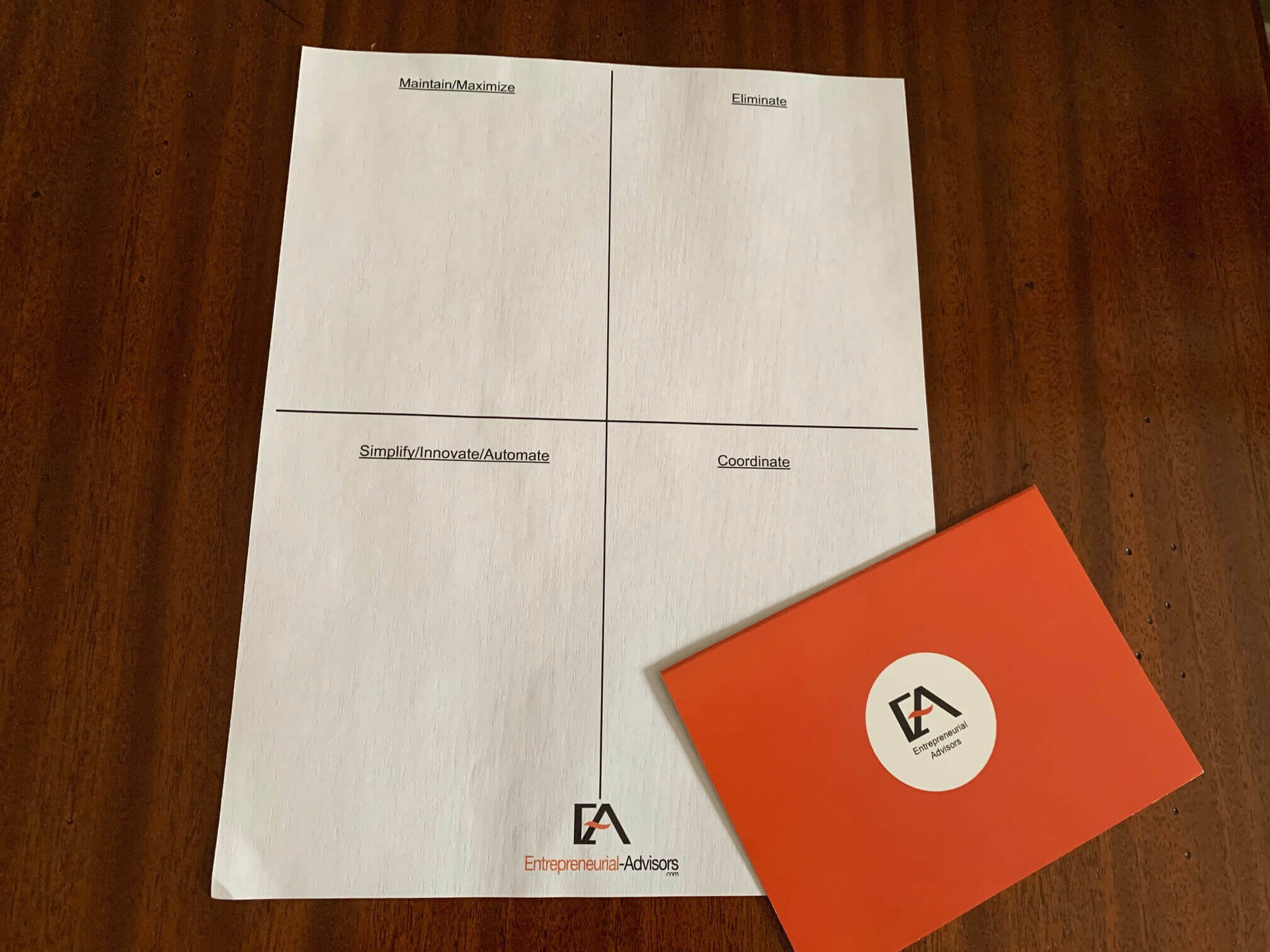Blog #250
Maximizing the highest and best use of teams is one of our primary obligations as leaders. Thankfully, there are many tools to help with this. Some call it “Delegate and Elevate,” a process where senior leaders focus on completing tasks that will have the greatest impact and delegating tasks that do not. The challenge comes when leaders work directly with the frontline people – they are the final line in the organizational structure, leaving no one to delegate tasks to. In some cases, it could be beneficial to realign accountabilities, as this will let team members do what they do best and/or enjoy most. Tap into their talents to benefit the team by creating happier employees.
In my advisory sessions with senior leaders, I have started introducing a new tool I developed called the “Maximizer Matrix”. Below is a brief explanation of the four quadrants in this two-by-two matrix.
I encourage the frontline folks to make a list of their daily tasks then put each task in one of these quadrants:
- Maintain/Maximize. What are the primary functions and areas of focus for this position? With the goal of maximizing the primary purpose/function of the position, what tasks could be done better? These are the core functions of the seat.
- Eliminate. In many organizations, especially generational or long-term ones, people continue performing tasks because they have always done them; this is not a good reason to keep doing something. Use the frontlines’ firsthand experience to help evaluate what could be eliminated or what could be transferred to a different team member. Freeing up time allows the frontline folks to focus on which areas to maximize.
- Simplify/Innovate/Automate. Not all accountabilities and processes can be simplified; however, you will find tremendous value in this if you can work through the process and identify opportunities for efficiency. Think about how processes could be simplified or streamlined. Getting input from employees pays massive dividends; recruiting them to assist with defining how you can simplify, innovate, or automate routine tasks gets the entire team involved.
- Coordinate. It is important to eliminate departmental silos, which is when certain departments do not share information with others in the same organization. When working with teams, one of my main objectives is to create one team, one voice, one vision. There is such an amazing impact when all teams/departments collaborate with each other. Examples might be HR teaming up with the sales team to find new referrals or have purchasing work with the sales team on inventory management. In other words, it is important to consider how the cross-coordination of teams could maximize the company’s overall efficiency and function.
Leaders, give this a try: encourage your team members to list the different activities they do throughout an average week. Once this is completed, ask them to think about each task then assign it to one of the four quadrants. It is ideal to bring the team together to talk through the different findings and to see where it goes. You may find some amazing results.
The idea is the more you can recruit and maximize the creativity and experience of your entire team, the better off you will be. This builds team health, employee engagement, and communication – which is great for your organization’s bottom line.
As a leader, do you need to focus more on your area of expertise? Are you maximizing your team’s talent? We can help with that! Contact us today to find out how.
Keep Smiling,
Kris

